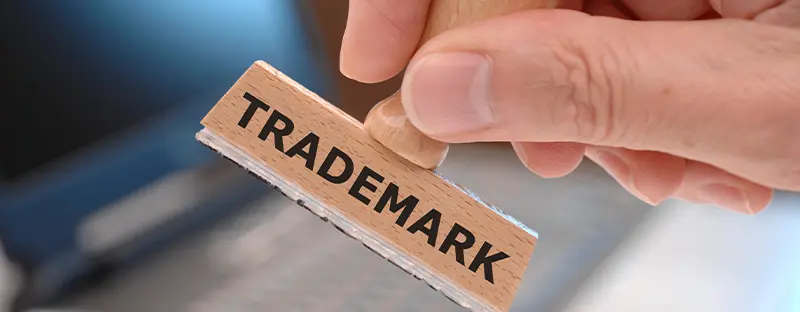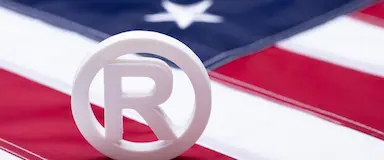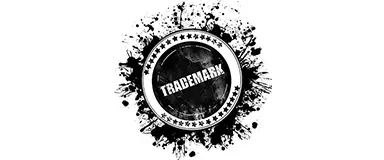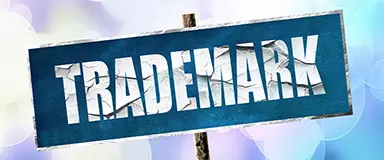Complete step-by-step guide to registering a trademark with the USPTO in 2025. Learn filing requirements, costs ($350 base fee), timelines (12-18 months), and maintenance requirements.
Fair Use vs. Trademark Infringement: Where’s the Line?
Written by Adrian Torres ·

When Terri Welles, Playboy’s Playmate of the Year 1981, created her personal website using terms like “Playboy,” “Playmate,” and “Playmate of the Year,” Playboy wasn’t amused. They sued for trademark infringement, claiming she was capitalizing on their brand without permission.
But here’s a twist: the court sided with Welles… well, mostly. The ruling was that her use of Playboy’s terms was “nominative fair use” because she was simply describing her actual title and accomplishments. However, when she used Playboy’s stylized rabbit logo repeatedly throughout her site as wallpaper, the court said that it crossed the line.
This case perfectly illustrates one of the most confusing areas of trademark law: when does using someone else’s trademark become infringement, and when is it perfectly legal “fair use”? Let’s unpack this critical distinction that could save your business from costly legal battles.
What Makes Trademark Fair Use Different
To begin, let’s clear up a common misconception. Trademark fair use is completely different from copyright fair use. You can’t just take someone’s trademark and claim “fair use” like you might with a copyrighted work.
The fundamental principle is that you can use a trademark in certain situations without the owner’s permission so long as it doesn’t confuse consumers about the source of the presented goods or services, and only if it falls into one of two specific categories.
The Two Types of Trademark Fair Use
Descriptive Fair Use (Classic Fair Use)
This occurs when you use someone else’s descriptive trademark to describe your own goods or services simply because that’s what they are. The key is that you’re using the trademarked word in its ordinary, descriptive meaning.
To illustrate this, consider WD-40’s trademark “THE INHIBITOR.” When another company described their product as “a long-term corrosion inhibitor,” WD-40 sued. The court ruled this was fair use because the competitor was using “inhibitor” in its descriptive sense. The product was a corrosion inhibitor, and that’s what it did.
For descriptive fair use to apply, three conditions must be met:
- The trademark must actually be descriptive of the goods or services.
- The usage is in its descriptive sense, not as a trademark.
- The use must be in good faith.
Nominative Fair Use
This allows you to use a trademark to refer to their products or services. It’s called “nominative” because you’re “naming” or identifying the trademark owner’s offerings.
The most common examples include:
- Repair shops advertising “We fix BMW vehicles”
- Retailers stating “We sell Samsung products”
- Newspapers conducting polls about “New Kids on the Block”
- Comparison advertising that mentions competitor brands
The Three-Part Test for Nominative Fair Use
Courts use a three-part test to determine if nominative use is legitimate:
1. Is the trademark necessary to identify the product or service?
For fair use, there must be no other practical way to identify what you’re talking about. You can’t reasonably refer to “that professional baseball team from Minnesota” when you mean the Minnesota Twins.
2. Do you use only as much of the mark as necessary?
This is where many people get into trouble. Using a logo, stylized fonts, or distinctive design elements usually goes beyond what’s “necessary.”
3. Do you suggest sponsorship or endorsement?
The user claiming free use shouldn’t imply that the trademark owner sponsors, endorses, or has any relationship with them. Clear disclaimers help, but they’re not always enough if your overall presentation suggests a connection.
Other Real-World Examples of Fair Use
- An electronics shop suggesting “We specialize in Apple iPhone and MacBook repairs” is typically fine, as long as they don’t use Apple’s logo or suggest they’re an authorized Apple repair center.
- A car parts store suggesting its products are “Compatible with Ford F-150 trucks” is legitimate because there’s no other way to explain compatibility without mentioning the Ford brand.
- A restaurant review suggesting “Better burgers than McDonald’s” is generally acceptable comparative advertising, assuming it’s truthful and not misleading.
- A wedding photographer advertising “As seen in Martha Stewart Weddings” is usually fair use, provided they actually were featured and don’t suggest ongoing endorsement.
When Fair Use Becomes Infringement
The line does get blurry, and many businesses cross it without realizing.
Using Too Much of the Mark
Radio stations wanting to appeal to university sports fans can’t just plaster a name and a logo of their team across their advertising. Courts had previously found that this went beyond what was necessary to identify their target audience.
Suggesting Endorsement
When a cosmetics company used “SEAL IT WITH A KISS” in marketing campaigns, they successfully defended against infringement claims. But if they had used the exact trademarked styling or suggested the trademark owner endorsed their product, the outcome would likely have been different.
Prominent or Stylized Use
Going back to Terri Wells from the intro, using plain text to describe her Playmate status was fine, but using Playboy’s stylized logo as website wallpaper went too far.
Competitive Advertising
Comparative advertising gets special protection under trademark law, but it’s also where most fair use claims go wrong. You can mention competitors by name in advertising, but strict rules apply:
What’s Generally Allowed:
- Truthful comparisons of features, prices, or performance
- Factual statements about compatibility or alternatives
- Identifying competitors in market research or surveys
What Often Crosses the Line:
- Using competitor logos or distinctive design elements
- Implying endorsement or partnership
- Making false or misleading comparisons
- Using trademarked slogans or taglines
Take the case of a motorcycle magazine that used “Ride Hard” in headlines. Harley-Davidson sued, claiming infringement of their “RIDE HARD” trademark. The court ruled in favor of the magazine, finding that “ride hard” was being used descriptively to describe motorcycle culture, not as a trademark.
Practical Guidelines for Businesses
The line between fair use and trademark infringement isn’t always clear, but the principles are consistent. For fair use to apply, the trademarks are used only when necessary, only as much as needed, and never suggesting sponsorship or endorsement when none exists.
If you found yourself on the other end of the dispute (i.e., wondering if your trademark is being used fairly), then it might be time to get in touch with trademark protection attorneys. They will tell you if you have the elements for a legitimate case.


